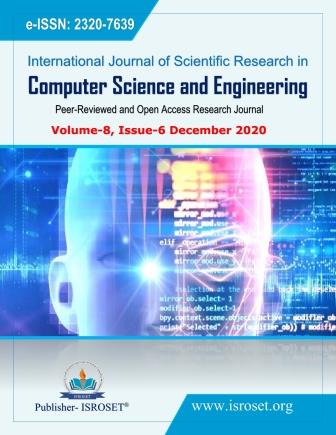Hydro Meteorological Drought Forecasting, using Artificial Neural Network (ANN) and Predict Values of Hydro Meteorological Drought Condition Derived using Rainfall Data
Keywords:
Data Source, Artificial Neural NetworkAbstract
This paper focuses on Hydro Metrological Drought Forecasting, using Artificial Neural Network (ANN) and predicts the values of Hydro Meteorological Drought condition derived using Rainfall data of Bhopal (M.P). We have used the Rainfall data as input data of ANN model for Hydro Meteorological Drought forecasting, and determine Standardized Precipitation Index (SPI). Artificial Neural networks operate on the principle of learning from a training set. There is a large variety of neural network models and learning procedures. Two classes of neural networks that are usually used for prediction applications are feed-forward networks and recurrent networks. They often train both of these networks using back-propagation algorithm.
References
Agnew, C. T.: Using the SPI to identify drought. Drought Network News, Vol.12, Issue.1, pp.6-11, 1999.
Bankert, R. L.: Cloud classification of AVHRR Imagery in maritime regions using a probabilistic neural network, J. Appl. Meteorol., 33, pp.909–918, 1994.
Marzban, C. and Stumpf, G. J.: A neural network for tornado prediction based on Doppler radar-derived attributes. J. Appl. Meteor., 35, pp.617–626, 1996.
Mu¨ller, B., and Reinhardt, J.: Neural Networks: An Introduction, the Physics of Neural Networks Series, Springer-Verlag, 2, pp.266, 1991.
McKee, T. B., Doesken, N. J. and Kleist J.: The relation of drought frequency and duration to time scales, Proceedings of the Eighth Conference on Applied Climatology, American Meteorological Society, Boston. pp.179–184, 1993.
McKee, T. B., Doesken, N. J. and Kleist, J.: Drought monitoring with multiple time scales. Proceedings of the Ninth Conference on Applied Climatology; American Meteorological Society, Boston. pp.233–236, 1995.
Downloads
Published
How to Cite
Issue
Section
License

This work is licensed under a Creative Commons Attribution 4.0 International License.
Authors contributing to this journal agree to publish their articles under the Creative Commons Attribution 4.0 International License, allowing third parties to share their work (copy, distribute, transmit) and to adapt it, under the condition that the authors are given credit and that in the event of reuse or distribution, the terms of this license are made clear.







